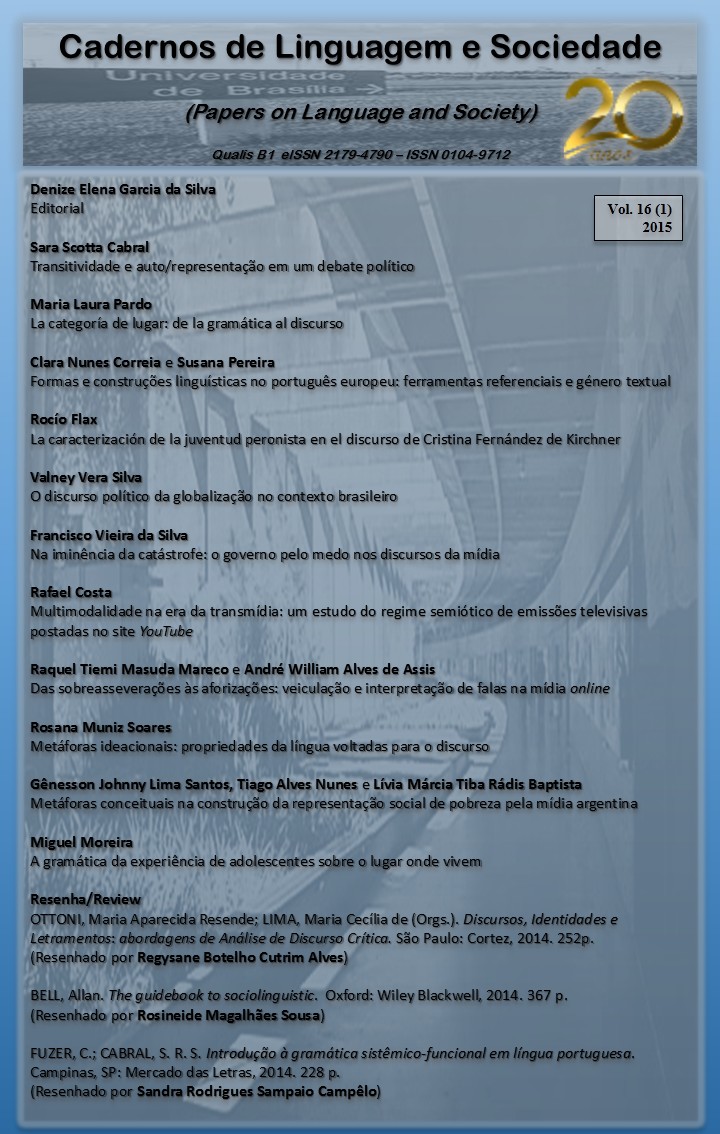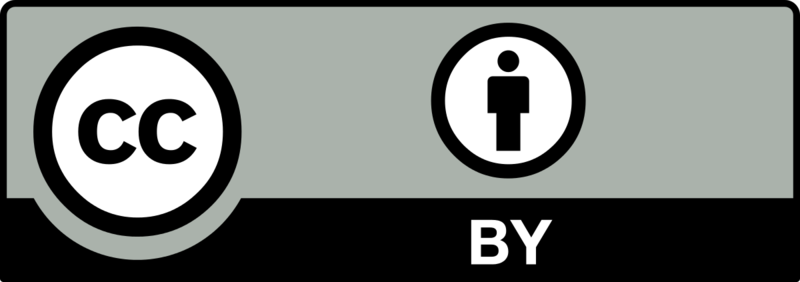The category of Place: Grammar to Discourse
DOI:
https://doi.org/10.26512/les.v16i1.7526Keywords:
Place, Grammar, Discourse, MSDALTAbstract
The aim of this paper is to discuss some concepts related to synchro-diachronic method to the linguistic analysis of texts (from now on MSDALT) (PARDO, 1996, 2011). This is an exploratory research. Specifically we try to account for the grammaticalized category and, therefore, obligatory Place. It is recognized the orientative role of the category Place; however, this can change its role in the text and become a category of semantic-discursive character. In addition, this category becomes one of the topics of the text in which it is included. This re-functionality of the category of Place seems to keep a link with the postmodern discussion about space, and this happened in modernity with grammaticalized Time
category. This topic is outlined in this paper for future research. The theoretical framework of this research is Discourse Analysis. The methodology is qualitative and the selected corpus is made up of news on YouTube chronic surveyed, of which two are taken as examples. The linguistic analysis is performed by the aforementioned method (PARDO, 2011).
Downloads
References
BERNÁ S. C. Categorización moderna de los complementos circunstanciales: evolución de la tradición hispánica y revisión crítica. Tonos digitales, No. 25, Julio 2013.
CHOMSKY, N.. Lectures on government and binding. Dordrecht: Foris, 1981.
DIK, S. Gramática funcional. Madrid: Sociedad General Española de Librería, 1981.
FAIRCLOUGH, N. Critical discourse analysis: The critical study of language. London: Longman, 1995.
HABERMAS, J. La teoría de la acción comunicativa. Madrid: Taurus, 1986.
LABOV, W. y WALETZKY, J. Narrative analysis. En HELM, J. (ed.) Essays on the verbal and visual arts. Seattle: University of Washington Press, p. 12-44, 1967. Reimpreso en el Journal of Narrative and Life History, vol.7, p.3-38, 1997.
LABOV, W. Some further steps in narrative analysis. En The Journal of Narrative and Life History, special issue, 1997.
_____. En http://www.ling.upenn.edu/~wlabov/sfs.html
_____. Narratives of personal experience. En HOGAN, P. (ed.) Cambridge encyclopedia of the language sciences. Cambridge: Cambridge University Press, 2010.
_____. http://www.ling.upenn.edu/~wlabov/Papers/FebOralNarPE.pdf
MOLINER, M. Diccionario de uso del español [CD-ROM]. Madrid: Gredos, 1998 [1966-1967].
PARDO, M.L. Derecho y Lingüística. Cómo se juzga con palabras. Buenos Aires: Nueva Visión, 1996a.
_____. Derecho y Lingüística. Cómo se juzga con palabras. Buenos Aires: Nueva Visión, 1996b.
_____. Teoría y metodología de la investigación lingüística. Método sincrónico-diacrónico de análisis lingüístico de textos. Buenos Aires: Tersites, 2011.
_____. Las representaciones socio-discursivas que sobre los jóvenes pobres ligados al delito crean los medios televisivos en Argentina. En: Romanica Olomucensia, Praga, República Checa, pp. 249 -264, 2014.
STRAUSS, A. y J. CORBIN. Bases de la investigación cualitativa. Técnicas y procedimientos para desarrollar teoría fundamentada. Antioquia: Editorial Universidad de Antioquia.
TESNIÈRE, L. Elementos de sintaxis estructural. Madrid: Gredos, 1994.



